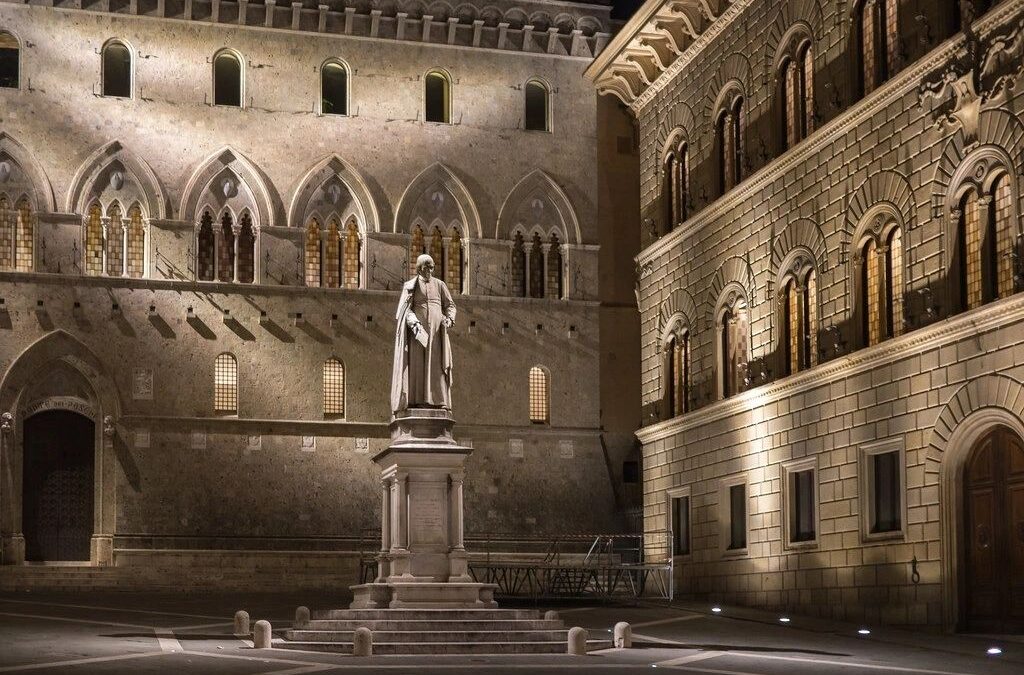My parents and I wove through the throng of tourists listening to their guide as she gestured with what looked like a selfie stick that had a little red flag tied at the end in a bow. I muttered something about how thick the crowd was and laced a newly-learned Italian curse to give it some extra spice.
The selfie stick gestured at a grand statue standing at the center of Piazza Salimbeni, a man named Sallustio Bandini who was a Sienese priest and one of the first economists in Italy towered over us. Above a doorway in the corner just to his left read the words, “Monte Dei Paschi.”
Monte dei Paschi di Siena has the distinction of being the oldest bank in the world, tracing its lineage to 1472, when it was instituted as a mount of piety by the Republic of Siena.
A mount of piety was a glorified pawn shop that often gave its proceeds to charity in medieval and Renaissance Europe. Their intention was to give the poor access to loans at a reasonable interest rate funded by the charity of more wealthy donors. You can see the shape of a bank begin to take shape here.
Early Years
The Mount of Piety was established in the wake of the Black Death that had ravaged Europe, and devastated Siena in particular. Before pestilence wrapped its icy claws around the ancient city walls, Siena had a population of around 100,000 people. Once free from the throes of illness, and the people recovered from streets littered with corpses and nights of wailing from the ailed and their caretakers when death cut with his scythe, wealthy people of the Republic came together. Weary of the carnage wrought by the plague and hearing the cries of mourners in the streets and bells still tolling for the dead, they established a Mount of Piety.
The truth is, Siena never truly recovered from the plague. With much of the population reduced to poverty and begging, they offered loans at a 7.5% interest rate. A third of the population was gone by 1348, and the people were clamoring.
For centuries, it went on like this. In the 16th Century, at the height of the Republic, the Mount saw a bit of a transformation into an orthodox commercial bank and even began to sponsor public functions like the yearly Palio. That is, until a century after the fall of the Republic, the Medici Grand Duke of Tuscany issued a dictum citing that he would guarantee the accounts held at the bank using the proceeds from pastures held in Maremma of southwestern Tuscany. This is where the “Paschi” part of the name comes into the picture meaning pasture.
For centuries the bank was the economic powerhouse of Siena, though relatively conservative in its ventures. Up to the modern day, much of the bank was mainly focused on the city and its surrounding territory. It was said that everyone in Siena either already worked for the bank, desired to do so, or was collecting a pension from it. Monte dei Paschi di Siena is still the largest employer in the city frozen in time.

In 1624 the bank was granted permission by the Grand Duke of Tuscany to split into two separate banks, then in 1783 the two banks reunited to become an institution called Monti Riuniti, becoming Monte dei Paschi di Siena in 1872 and bringing the institution into the modern era.

